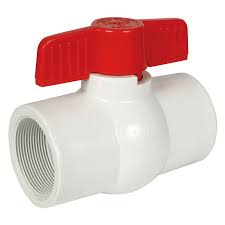As an affordable and accessible thermoplastic, polyvinyl chloride (PVC) has gained popularity across various sectors. This includes several residential and industrial applications, particularly plumbing and processing systems.
In these applications, PVC is often used to construct and support the required infrastructure. In addition to pipes, this also includes various valves used to control and regulate the associated flow.
If you have never used a PVC valve, learning about these fixtures can seem a bit overwhelming. But when you take a little time to go through the relevant details, it becomes much easier to find a suitable fit for your needs.
To help you along the way, the following PVC valves selection guide can help you learn more about these fixtures and their overall value for your specific needs.
A PVC Valve is Available in Different Forms
Similar to metal valves, PVC valves come in different types, shapes, and sizes. Each kind of valve has its purpose and can easily integrate into existing metal or plastic-based systems.
With that being said, the main difference in selecting PVC valves comes from the application itself. That is why you must learn about common PVC valves before moving forward with the selection process.
Gate Valve
This standard multi-turn valve uses a gate mechanism to either completely shut off flow or allows it to run entirely unobstructed. However, it is not used to regulate flow.
When manufactured as a PVC valve, the gate valve provides the same function as a metal valve. But it comes in a much lighter weight and lower price. These features also hold for the rest of the valves on this list.
Ball Valve
A ball valve works through a quarter-turn mechanism. The flow is controlled by turning the ball within the valve body, with the ball having a hole or bore in it.
When the bore faces the pipeline, it allows the flow to pass through. When it’s turned away, it obstructs it completely. This is also a shut-off valve and does not regulate the flow. With that being said, it’s available in 2-way and 3-way mechanisms for more advanced systems.
Butterfly Valve
If you want to regulate flow through PVC valves, a butterfly valve is the way to go. Built with a rotating disc within its body, the valve’s multi-turn handle lets you easily control flow through your pipeline.
These valves are mostly used in industrial systems such as food processing or beverage processing plants. With their overall mechanism, they perform their expected function quite efficiently.
Check Valve
There are many instances where you may need to stop the flow from going in the opposite direction. Instead of investing in expensive pressure-inducing equipment, you can use a check valve for this need.
As a popular PVC valve, this fixture is readily available in a variety of sizes. When installed within a pipeline, it can help you solve the pressing backflow problem in an easy yet effective way.
Diaphragm Valve
If your processing needs are more intensive, you can go for a diaphragm valve that controls the flow’s speed and pressure.
These regulating valves are used in industrial applications and more sophisticated systems. However, they are readily available through several manufacturers.
Depending upon your requirements, you can find these valves in several levels of material strength. This ensures that your chosen valve can meet your intensive needs without any problems.

